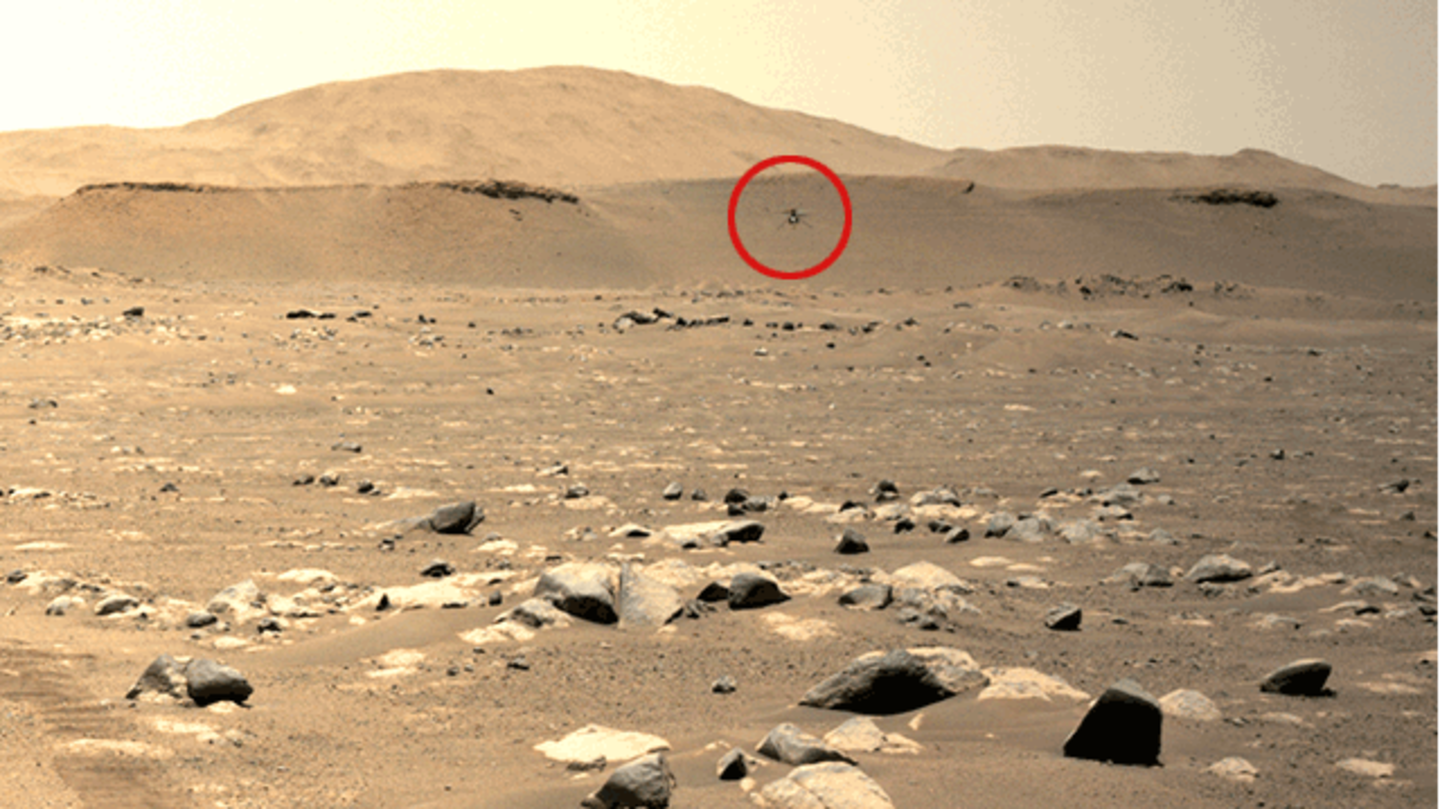
NASA's Ingenuity helicopter completes third long-distance flight, with fastest-yet airspeed
What's the story
NASA's Perseverance rover Mars mission has been a resounding success so far, with both its technology demonstrations showing promise.
Last week, MOXIE successfully generated oxygen. This week the Ingenuity helicopter flew farther and faster than ever before on its third test flight.
NASA engineers say they will push the helicopter harder in its next two test flights.
Going the distance
Ingenuity flew out beyond half a football field's length
On its first flight that lasted 39 seconds, Ingenuity attained an altitude of five meters, hovered, and then landed. In the second flight that lasted 52 seconds, it moved four meters side-to-side at 1.77 km/h.
The latest 80-second-long flight saw the helicopter fly 80 meters north of its landing zone and return, averaging a speed of 7.24 km/h.
Twitter Post
NASA Jet Propulsion Laboratory tweets upon completing third flight
Third flight in the history books✅
— NASA JPL (@NASAJPL) April 25, 2021
Our #MarsHelicopter continues to set records, flying faster and farther. The space chopper is demonstrating critical capabilities that could enable the addition of an aerial dimension to future missions to Mars beyond. https://t.co/TNCdXWcKWE pic.twitter.com/Uaxrr23Rfh
Rover’s role
Perseverance spectated test flights, doubled up as Ingenuity's radio base
The $85 million-worth helicopter's takeoff and landing "airfield" has been named the Wright Brothers Field in honor of aviation pioneers Wilbur and Orville Wright.
All this while, Perseverance has been documenting the rotorcraft's outings and acting as its radio base, 65 meters away from the airfield.
However, engineering data and flight performance metrics have been prioritized over visuals for immediate transmission to Earth.
Challenging mission
Ingenuity was sent to explore feasibility of extraterrestrial powered flight
The idea behind sending Ingenuity to Mars was to explore the possibility of unmanned, powered flight on other planets. The most challenging aspect of the flight was the extremely thin Martian atmosphere that's just one percent as dense as Earth's.
Additionally, piloting Ingenuity from Earth in real-time was impossible since signals reportedly take 16.5 minutes to travel 295 million kilometers between the planets.
Pushing limits
Last two attempts will be "really adventurous": Ingenuity project manager
NASA has said Ingenuity will take to Martian skies two more times before Perseverance shifts focus back to its primary mission of finding signs of ancient life in the Jezero crater.
BBC reported that NASA engineers want to push the technology even harder in an attempt to find the chopper's limits, even if that means crashing it in the process.